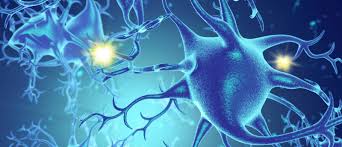
Following news at the end of 2022 that the Alzheimer’s Research team had found a treatment that had shown its capability in slowing down the cruel disease, a second company has reported that it too has a drug that can reduce the pace of the condition, by around a third.
Donanemab produced by the company Eli Lilly, just like Lecanemab which was in the news last year, is an antibody, similar to those that the body makes to attack viruses or bacteria, that has been engineered to tell the immune system to clear amyloid from the brain. Amyloid is a protein that clumps together in the spaces between neurons in the brain and forms distinctive plaques that are one of the hallmarks of Alzheimer’s.
As the most common cause of dementia in older adults, Alzheimer’s disease is a brain disorder which slowly destroys the memory and severely effects an individual’s ability to undertake even the simplest of tasks. Over 1,700 people took part in a trial of the new medicine, although in around a third of patients there were signs of brain swelling as a side effect.
The company said it would begin the process of having its drug approved for use in hospitals in the next few months.
Worrying projection
There are more than 55 million people in the world under the grip of the condition all at different stages and the projection at this present point in time is for the numbers to rise to a staggering 139 million by 2050.
Doubling up
The fact that there are now two drugs targeting amyloid in the brain has had a positive effect on the beliefs of scientists who are convinced that they are finally on the right track, after decades of failure. Professor John Hardy, from the UK Dementia Research Institute, whose work it was which led to the idea of focusing on amyloid, 30 years ago, said: “Having two drugs is great for competition and hopefully this should dispel any lingering doubts about this approach.”
Dr Cath Mummery, the clinical lead for the cognitive-disorders clinic at the UK’s National Hospital for Neurology and Neurosurgery, spoke of how she sees light at the end of the tunnel in the decades-long battle to find treatments for Alzheimer’s. She made the observation that the time is approaching where it will be possible to realistically hope to treat and maintain someone with the disease, with long-term management, as opposed to what has become the norm, which is palliative care.
Promising trial
The results of the latest trial conducted by Eli Lilly have yet to be published, but it is understood that 1,734 individuals who were in the earliest stages of Alzheimer’s took part in it. The drug Donanemab was given as a monthly infusion until the distinctive plaques that showed up in the brain were gone and the outright pace of deterioration as a result of the disease was slowed by around 29% overall.
It was acknowledged however, that nearly a third of those patients suffered some form of brain swell as a result, and whilst in the vast majority of cases this was only very mild, the was a small group numbering 1.6% who developed dangerous amounts of swelling, with two deaths directly attributed to it.
Dr Liz Coulthard, from the University of Bristol, made it clear that there were potentially “significant side-effects” and admitted that at this point there was still a lack of long-term data; but was keen to stress that the drug could in her words: “help people live well with Alzheimer’s for longer.”
Extra time
Speaking last year when news of the drug Lecanemab surfaced, Dr Elizabeth Coulthard, who treats patients at North Bristol NHS Trust, made the point that people have, on average, six years of living independently once the mild symptoms begin. She said if it was possible to slow that decline by up to a quarter, it could give an additional 18 months or more of quality independent life.
Where the name came from
Alzheimer’s is named after Dr. Alois Alzheimer who in 1906 noticed changes in the brain tissue of a woman who had died of an unusual mental illness. Amongst her symptoms was memory loss, together with speech difficulties and indeterminable behavioural patterns and he was able to connect these to the many abnormal clumps – which are now known as amyloid plaques – and tangled bundles of fibres, or neurofibrillary, and the condition came to be referred to as Alzheimer’s Disease.













0 Comments